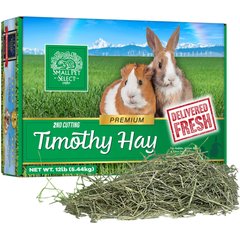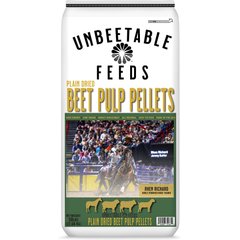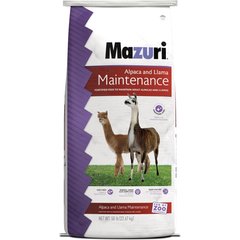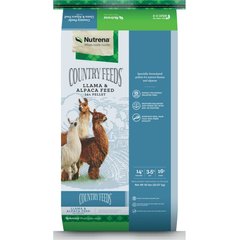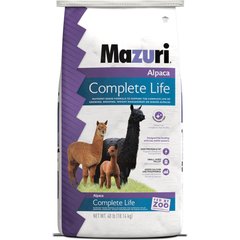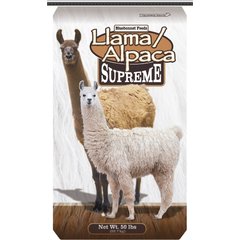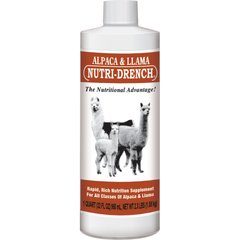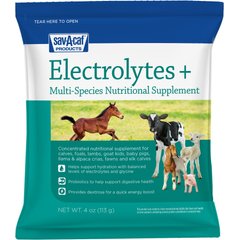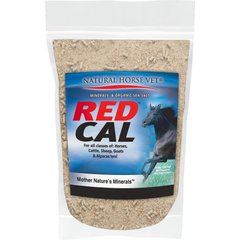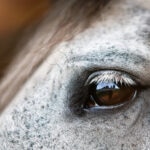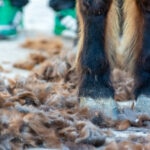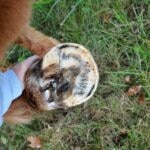What Do Llamas Eat?
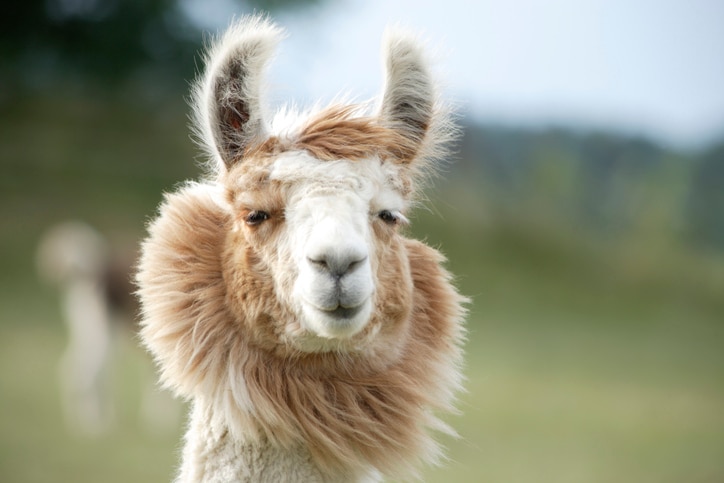
Photo by Display/iStock/Getty Images Plus
If you’ve ever dreamed of having your own farm and bringing home rescued llamas, you may have considered the question, “What do llamas eat?”
Here’s what makes the best diet—and treats—for your pet llamas. Keep in mind that llamas are herd animals, so you’ll be feeding more than one.
Key Takeaways
- Llamas are herbivores who need grass, hay, camelid-specific pellets, and safe mineral mixes to stay healthy.
- A balanced diet lowers stress, prevents digestive issues, and reduces competition amongst the herd.
- Never give your llama mineral blocks or mineral mixes made for other animals, as they can be deadly for llamas.
- Avocados, chocolates, onions, garlic, nightshade vegetables, sugary treats, and many plants are toxic or harmful for llamas.
How Does a Llama Digest Food?
A llama’s stomach is divided into three compartments, which allows them to regurgitate and chew cud—that is, partially digested food.
This setup helps them efficiently digest their meals, especially vegetation like hay and grass, which will make up most of their diet.
Fermentation is also an important part of a llama’s digestive process.
“Like true ruminants [such as cows and sheep], their multi-chambered stomach means that they rely on fermentation of foodstuffs by microbes for digestion,” says Signe Balch, DVM, a veterinarian at Cherry Valley Veterinary Services in Colorado.
Too much of the wrong foods or too little of the right foods can cause problems with fermentation and lead to health issues for your llama.
What Should You Feed Your Llama?
Llamas are herbivores who eat grass, hay, grains, and a variety of fruits and veggies as treats. Given a choice, a llama will freely browse for greens to eat—including grass and various plants leaves and stems.
When it comes to feeding your llama, here are the most common foods.
Grass
The foundation of a llama’s diet should be a nutrient-dense, digestible forage like fresh grass, Dr. Balch says.
“Llamas prefer to graze all day,” she notes.
Grass is good for the digestive system, and llamas have teeth that are specially designed for clipping blades of grass. There are six prominent teeth in the center of the lower jaw—and no teeth to match on the top jaw.
Instead, llamas have a thick ridge of gumline that helps them grab grass with those lower teeth. Each bite is pushed back to molars inside the cheeks where the grass is chewed up and swallowed.
Hay
Llamas need plenty of fiber in their diet and hay is an excellent source.
“We always recommend people have hay on tap because they need that consistent roughage to help maintain their rumen,” says Deborah Logan, who serves on the board of directors for Southeast Llama Rescue.
Older llamas with missing teeth might have difficulty eating hay, but fiber is still important, Logan says. In that case, she recommends an alternative like beet pulp.
Recommended Products
Pellets
Specially formulated grain pellets provide llamas with camelid-specific nutrients: protein, fiber, and a mix of vitamins and minerals.
However, it’s important not to overfeed pellets since llamas don’t metabolize glucose effectively, so pellets or commercially processed diets should be given in moderation.
Recommended Products
Minerals
Minerals are an important part of a llama’s diet, but choose a mineral mix formulated specifically for camelids, a biological family that includes llamas and alpacas.
Never feed your llama a mineral mix for goats, cows, or pigs, because they often contain copper, which is toxic to llamas.
Logan points out that aside from being potentially toxic, mineral blocks used for other farm animals usually aren’t a fit for llamas’ anatomy, so they are best to avoid.
Camelid-specific options will usually come as loose minerals that can be sprinkled on their pellets.
Recommended Products
What Can Llamas Not Eat?
Llamas love to get a treat, but for the safety of your llama, don’t wing it when determining what to feed.
Table scraps are a no-no, and there are other foods to avoid that could cause gastric upset or more serious effects; some may even be fatal.
Here are some of the most common foods a llama should not eat:
- Avocado
- Cherries
- Nightshade vegetables (such as tomatoes or eggplants)
- Chocolate
- Very sugary treats
- Onions
- Garlic
- Peas
- Kale
- Dairy (like cheese or milk)
- Meat
Consult your veterinarian to learn more about plants specific to your area, but common plants like morning glory vines, daffodils, calla lilies, bracken fern, azaleas, or rhododendrons are all dangerous.
Remove them if they’re growing in or around your llama’s habitat.
How Should You Feed Your Llama?
Llamas who graze in the pasture will take advantage of the opportunity to eat throughout the day. Similarly, if you have hay available for your llama to freely feed, they’ll likely make repeat visits to the feeder throughout the day.
On the other hand, if your llama has set mealtimes, you can feed them once or twice a day as long as your llama isn’t pregnant or dealing with a health condition. (If they are, ask your vet for advice.)
According to Logan, consistency is important to avoid stress, since llamas thrive on routine.
How Does Your Llama’s Diet Affect Their Health?
Llamas that have access to a nutritionally complete diet will be less prone to stress and health problems.
While foraging for vegetation is a llama’s natural feeding style, these domesticated animals are quite adaptable to being fed hay with limited (or no) opportunity to graze on grass.
A lot of llama rescuers keep them on a “dry lot,” or a place with minimal grass, Logan says. This can have advantages, since it can limit their exposure to gut parasites. If you choose this route, offer plenty of forage in the form of hay or beet pulp formulas.
Too little feed or forage can create unhealthy competition and stress among a herd of llamas. In such cases, dominant animals can exhibit resource-guarding behaviors like spitting at or charging other llamas that approach the food source.
Keep enough food available for the size of the herd so that you can minimize these types of behaviors—and keep your llamas happy with a well-rounded diet.
FAQs About Your Llama’s Diet
Can I give my llama special treats?
Yes, you can give your llama a special treat as a reward or to promote bonding.
“Natural, plant-based products that are low in sugar make the best treats for llamas,” says Dr. Balch.
Logan suggests treats like sliced carrots, apples, pears, bananas, and yams, but keep things bite-sized to avoid too much sugar and slice them into smaller pieces to avoid choking. Remove seeds too.
For a ready-made treat, give your llama cookies made for horses. Other horse treats will be too large for llamas, but cookies are softer and easier to break into small pieces.
Can I give my llama human food?
Yes, you can give your llama some human foods but not most. Many common human foods are unsafe for llamas, such as avocado and chocolate, so thoroughly research your options before feeding them human treats.
How much water do llamas drink every day?
Generally, llamas drink between 2 and 5 gallons of water each day. Grazing animals benefit from the higher moisture content of grass, but animals kept on a dry lot will drink more water.
